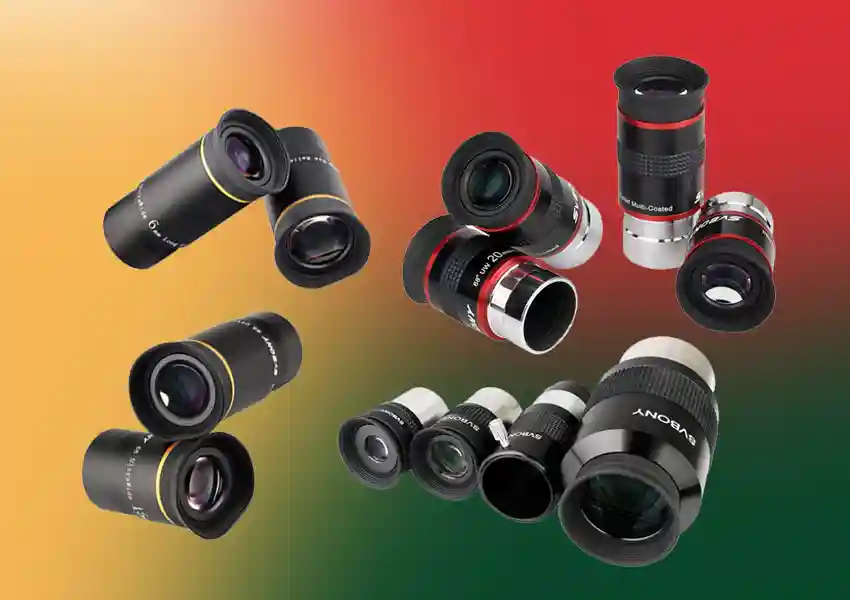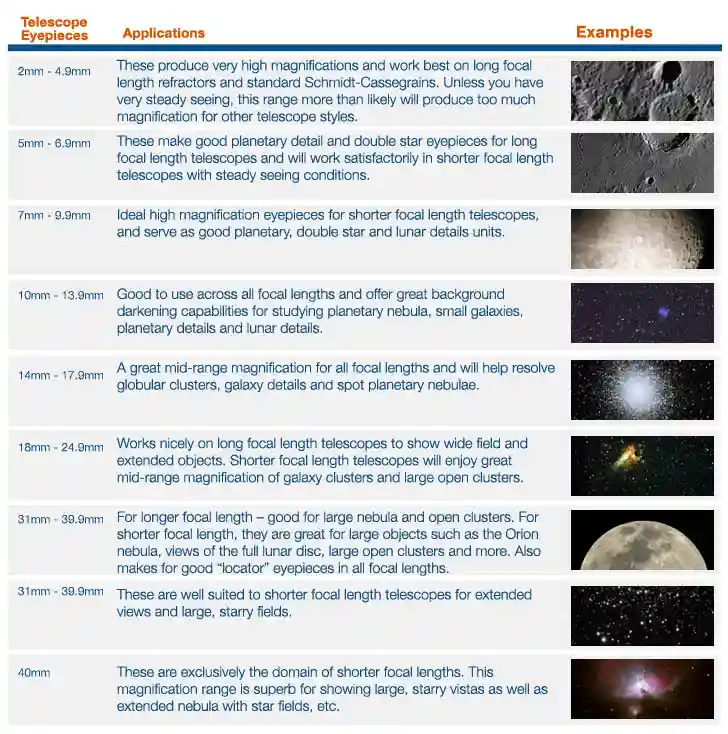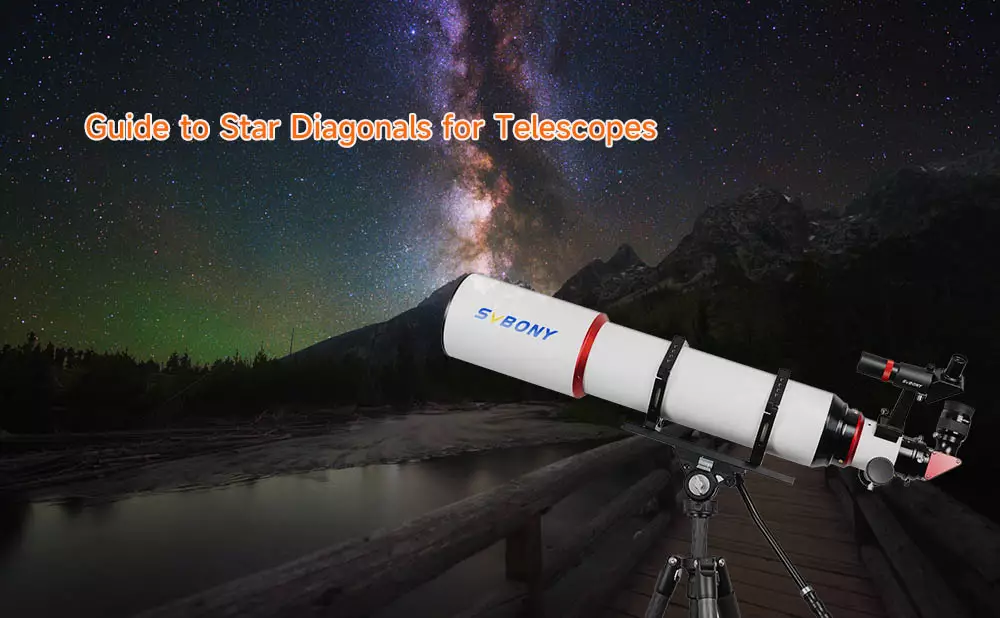Astronomy Eyepieces

Astronomy Eyepieces
No telescope works without an eyepiece. So, just what is a telescope eyepiece? They come in a range of sizes, magnification factors, styles, types and manufacturers. To understand how your telescope's eyepiece works with your telescope towards understanding the power (or magnification) achievable, read on.
First, we have to understand Focal Length
Focal length is typically measured in mm, and is the clearest marker of how powerful your telescope is. It refers to the distance between the lens or primary mirror, to the point where the telescope is in focus. This point is known as the Focal Point. The longer the focal length of your telescope, the more powerful it is, the larger the image, and the smaller the field of view. For example: A telescope with a focal length of 2000mm has twice the power and half the field of view of a 1000mm telescope.
Calculating Magnification (Power)
To determine the magnification of your eyepiece, simply divide the focal length of your telescope with the focal length of your eyepiece. Check out this awesome Eyepiece Magnification Calculator if you're getting stuck.
Magnification/Power = Telescope Focal Length / Eyepiece
Thus, by using different eyepieces of different focal lengths, you'll be able to experience different magnifications.
e.g. a 25mm eyepiece used on a telescope with a 1000mm focal length would yield a power of 40x (1000 / 25 = 40) and a 10mm eyepiece used on the same telescope would yield a power of 100x (1000 / 10 = 100). Remember, the longer the focal length of your eyepiece, the less its magnification, and the wider your field of view.
|
Warning Power above the highest usable magnification will appear dim, and low-contrast. e.g. The maximum power on a 4 inch telescope : 4 x 60 = will be 240x. |
As power increases, sharpness and detail decreases - because you're pushing your telescope to the limits of its capability, the exit pupil will decrease in size (read more about exit pupils below), resulting in darker images. Higher powers are used mainly for lunar, planetary, and binary star observations, as they emit a larger amount of light.
Be wary of manufacturers that advertise ridiculously high-powered telescopes (e.g. 750x) with a mere 6mm aperture. Both false and misleading, these manufacturers leverage the fact that most consumers are in the dark about how telescopes operate. They pander to the common misconception that magnification is the most important thing in astronomical telescopes.
What's this about Exit Pupils?
The exit pupil is the image of the object that's been formed by your eyepiece. It's also where you place your eye to see the full field of view. For an eyepiece with a particular focal length to work well with your telescope, you need to determine the exit pupil. The size of your exit pupil is merely:
Exit Pupil = Telescope Aperture / Magnification (Power)
As you increase the power of your scope, the smaller your exit pupil becomes. Your eye's pupil cannot get wider than 7mm, nor smaller than about 0.5mm. Ideally, you should only purchase eyepieces that - when combined with your telescope - provides you with exit pupils no larger than 6mm, and no smaller than 2mm for optimum effect.
Telescope Eyepieces (with credits to Universe Today)

Once you've selected an eyepiece, calculate the magnifications they will produce with your scope. For determining maximum power, remember that a good rule of thumb is to use not more than 60x per inch of aperture with apertures up to 6". Higher magnifications may still look nice, but are unlikely to reveal any additional detail. Realistically, the atmosphere will limit your viewing to a maximum of about 300x, no matter how large your telescope's aperture.
Basically, you'll be choosing low and medium power eyepieces in increments to "frame" the subject, and high powered eyepieces to reach optimum contrast and resolution for viewing planets and double stars.
From ozscopes.








